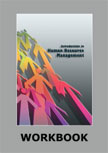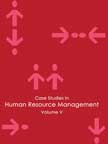Managing Cultural Change at P & G
|
|
ICMR HOME | Case Studies Collection
Case Details:
Case Code : HROB042
Case Length : 18 Pages
Period : 1990 - 2004
Pub Date : 2004
Teaching Note :Not Available
Organization : P & G Inc.
Industry : FMCG
Countries : USA
To download Managing Cultural Change at P & G case study
(Case Code: HROB042) click on the button below, and select the case from the list of available cases:

Price:
For delivery in electronic format: Rs. 500;
For delivery through courier (within India): Rs. 500 + Rs. 25 for Shipping & Handling Charges
»
Human Resource, Organization Behavior Case Studies
» HRM Short Case Studies
» View Detailed Pricing Info
» How To Order This Case
» Business Case Studies
» Area Specific Case Studies
» Industry Wise Case Studies
» Company Wise Case Studies

Please note:
This case study was compiled from published sources, and is intended to be used as a basis for class discussion. It is not intended to illustrate either effective or ineffective handling of a management situation. Nor is it a primary information source.
Chat with us

Please leave your feedback

|
|




<< Previous
P&G's HR Practices and Culture
|
Procter & Gamble was established in 1837 by William Procter, a candle maker, and
his brother-in-law, James Gamble, a soap maker, when they merged their small
businesses. They set up a shop in Cincinnati and nicknamed it "Porkopolis"
because of its dependence on swine slaughterhouses. The shop made candles and
soaps from the leftover fat of the swine. By 1859, P&G had become one of the
largest companies in Cincinnati, with sales of $1 million.
From the very beginning, P&G's management treated its employees like family
members.
|

|
The company's core values, purpose, principles and vision focused on the
development of its people (Refer Exhibit IV, V and VI). In 1885, P&G decided
to give its employees Saturday afternoons off with pay. By 1887, P&G had
started a profit-sharing plan.
In 1915, the company began to offer a sickness, disability and life
insurance plan. Eight years later, P&G guaranteed employees forty-eight
weeks of employment in a year.
While the Great Depression of the 1930s forced other manufacturers to shut
down, P&G's soap plants continued to function. P&G has traditionally
encouraged lifetime employment by offering stock options and other benefits
to those who stayed with the company.
|
|
P&G followed a comprehensive recruitment process. The company's
cultural legacy was the rule to conduct almost all its recruitments
on campuses. Resumes were scanned for promising candidates,
including those students who had not signed up for interviews. Top
officials of the company went for pre-placement talks at colleges.
Strong relationships were developed with college placement offices
and faculty. The company hired students for various functions such
as finance, manufacturing, marketing, research and sales. It hired
from all the major universities in general, and from the big
business schools such as Harvard, Wharton, Stanford and Northwestern
in particular. |
P&G conducted written tests to evaluate the applicants' aptitude for leadership
and problem solving. The company conducted an in-house test (known as the M
Test) that measured the candidate's interpretative and reasoning skills. Studies
made by P&G showed a strong positive correlation between high scores on the M
Test and success on the job.
P&G's interviewing process was purposeful and behavior-based. The candidate's
past experience and accomplishments were examined for leadership, problem
solving capabilities, initiative and ability to work with others.
P&G's manpower policies emphasized giving new recruits early responsibility and
charted out a rapid career path. New recruits were encouraged to build long-term
careers with the company.
The company took several measures to develop its employees. Superiors were
encouraged to train and help in the development of their subordinates. The
vehicle for this process, used around the world, was the Work and Development
Planning System (W&DP).
The W&DP had four components - the previous year's plan versus the results;
areas for further growth and development; near-term and long-term career
interests; and a development and training plan for the year ahead. The W&DPs
were reviewed annually and updated regularly. In addition to the formal review
and updates of the W&DPs, superiors were encouraged to supplement the program
with informal, ongoing coaching...
Excerpts >>
|
|










